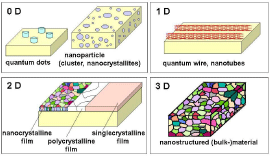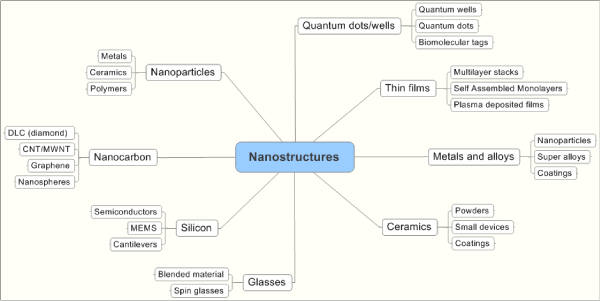
Editorial
Ann J Materials Sci Eng. 2014;1(2): 2.
Nano Materials & Nanotechnology
Hans-Jörg Fecht*
University of Ulm, Germany
*Corresponding author: Hans jorg Fecht, University of Ulm, Albert-Einstein-Allee 47, 89081 Ulm, Germany
Received: September 08, 2014; Accepted: September 13, 2014; Published: September 17, 2014
Editorial
Nanotechnology is considered as one of the most eminent Emerging / Enabling Technologies of today and, thus, is of utmost importance for the technological development. Nanotechnology is a highly multidisciplinary field, drawing from materials science, interface and colloid science, device and applied physics, supramolecular chemistry, self-replicating machines and robotics, chemical engineering, mechanical engineering, biological engineering, and electrical engineering. The first use of the concepts in ‘nano-technology’ was in 1959 given in a talk given physicist Richard Feynman at Caltech [1]. Feynman described a process by which the ability to manipulate individual atoms and molecules might be developed, using one set of precise tools to build and operate another proportionally smaller set down to the needed scale. In the course of this, he noted, scaling issues would arise from the changing magnitude of various physical phenomena: gravity would become less important and surface tension would become more important, etc. The key developments based on Feynman’s fundamental idea however became only feasible in the last decades.
As predicted it is generally found that all fundamental physical properties change dramatically when the characteristic length scale of a particular property coincides with the structural length scale of the nanostructure of a material. This fundamental behaviour can generally be found for objects with different dimensionalities, namely 0-D (nanosized clusters), 1-D (nanowires), 2-D (thin-film-multi layers) and 3-D (bulk nanostructures) when the length scale of a microstructure is on the order of only a few nanometers as schematically depicted in Figure 1.
Figure 1: Nano materials and nanostructures classified by their reduced dimensionality (NMTC Werner).
In all these cases, interfaces and surfaces which separate the different particles, layers and crystalline or non-crystalline domains from each other play the crucial role in controlling the properties and stability of nanostructures. These effects can be further used to Taylor and tune the properties of nanostructures for a wide range of materials from metals and alloys, to nano carbon, glasses, ceramics to semiconducting materials as shown schematically in Figure 2.
Figure 2: Classifications of nanostructures adopted from NANO54 – Foothill College.
The most important features rely on the fact that the nano scale building blocks offer improved properties and functionalities which are unavailable in conventional materials and devices, since materials in the size range of a few nanometres generally exhibit fundamentally new behaviour when their size falls below the critical length scale associated with any given property. For example, the wavelike properties of electrons inside condensed matter are strongly influenced by structural variations on the nanometre scale. Furthermore, by patterning matter on the nanometre length scale, it is possible to vary fundamental properties of materials, for instance melting temperature, magnetisation, charge capacity, or colour, without changing the chemical composition. Table 1 summarises a few examples regarding the particular property of interest (in alphabetical order), the relevant physical phenomena and possible technological applications.
Effect of nanoscale
Applications
Higher surface to volume ratio, enhanced reactivity
Catalysis, solar cells, batteries, gas sensors
Lower percolation threshold
Conductivity of materials, sensors
Increased hardness / wear resistance with decreasing grain size
Hard coatings, tools, protection layers
Narrower bandgap with decreasing grain size
Opto-electronics
Higher resistivity with decreasing grain size
Electronics, passive components, sensors
Improved atomic transport kinetics
Batteries, hydrogen storage
Lower melting and sintering temperature
Processing of materials, low sintering materials
Improved reliability, fatigue
Electronic components, MEMS
Table 1: Size effects in interface controlled nanostructures.
As such, materials engineering is transforming matter into useful materials; and nanotechnology permits to engineer the shape, size and structure of materials on the nano-scale. According to the usual definition of nanotechnology, it is engineering materials in the scale from 1 to 100 nm. A second component of the nanotechnology definition is that it exploits new phenomena occurring when a characteristic dimension of matter is in the same range.
Expanding the range of dimensions available to materials engineering to the nano meter range is a megatrend. Man continuously has increased the precision with which materials are shaped and measured. In past ages, the precision with which materials could be shaped and manipulated was in the range of 1 0.1 mm (e.g. various constructions, ships, tools). In the micro-technology era, the precision was 1000 times higher: 0.001 mm. At the beginning of the 20th century the concept of microstructure emerged which means that it became possible to observe the internal structure of defects in materials (e.g. grain boundaries, interfaces, precipitations) once micrometre resolution was available. At the same time, the precision of machining various mechanical parts was in the 1μm-range. Furthermore, already in ancient times and during the middle ages, nano particles of gold were used to change the colour of glass. However, the reason for the change of colour and the fact that gold can form nano-precipitates were not known, of course.
Nowadays engineers can routinely produce and observe structures (layers, particles, atomic clusters, precipitates, inclusions, tubes, cavities, etc.) with a precision of 1 nm, or even less. However, the real reason nanotechnology attracts particular attention is because --for such small structures -- the properties of matter become size-dependent. We are used to the concept of material as such, but a material whose properties depend on its size and shape is conceptually quite new. The size and shape dependence of properties of matter opened a way to a number of important discoveries, many of which have found practical applications. It can be expected that we are at the beginning of the exploration of the fascinating opportunities nanotechnology offers.
Nanotechnology also exploits novel properties of structures made by arranging nano-sized building blocks into engineered higher rank structures. Shifting the research interests in this direction is also called a “Nano1 => Nano2 transition” [2]. This kind of technology is similar to the hybrid technology, by which various materials are combined into functional or construction materials, however, the structure is shaped on the nano-scale. Also organic-inorganic composites are well known, however, the world of structures made by joining nano-matter with nano-sized proteins and other molecules, like DNA or RNA, or their interactions is a fascinating field of nano-bio technology, where the new properties expected will result from the shape and arrangement of the building blocks, not only size. Examples are targeted drugs for cancer therapy.
The above definition of nanotechnology is used in the “academia,” by scientists and researchers. However, when asking where nanotechnology is going, “Quo Vadis nanotechnology?”, it might be interesting to first analyse in which space the movement is, and this depends on the different meanings nanotechnology has for various stakeholders: beyond Academia, there are Industry, Governments, and Society.
In conclusion, nanotechnology can be considered as materials engineering at the nano scale. It has ahead further exponential growth, and immense research fields have been opened in the area of nano-architectures, nano-micro architectures, nano-bio technology. Hierarchical nano-structures, nano-bio structures, and nano-micro structures will be created and new phenomena will be discovered. At the same time, traditional nanotechnology has already entered into an industrial stage with its distinct challenges of research, the regulatory factors, environment impact, and the issue of public perception.
References
- Feynman R. There’s plenty of room at the Bottom, Annual Meeting of the American Physical Society Dec. 29, 1959, published in Caltech Engineering and Science. 1960; 23:5: 22-36.
- Lojkowski W. The Nano-Micro Interface: Bridging the Micro and Nanoworlds. In: VandeVoorde M. Werner, H.-J. Fecht editors. Wiley-VCH. 2014.

